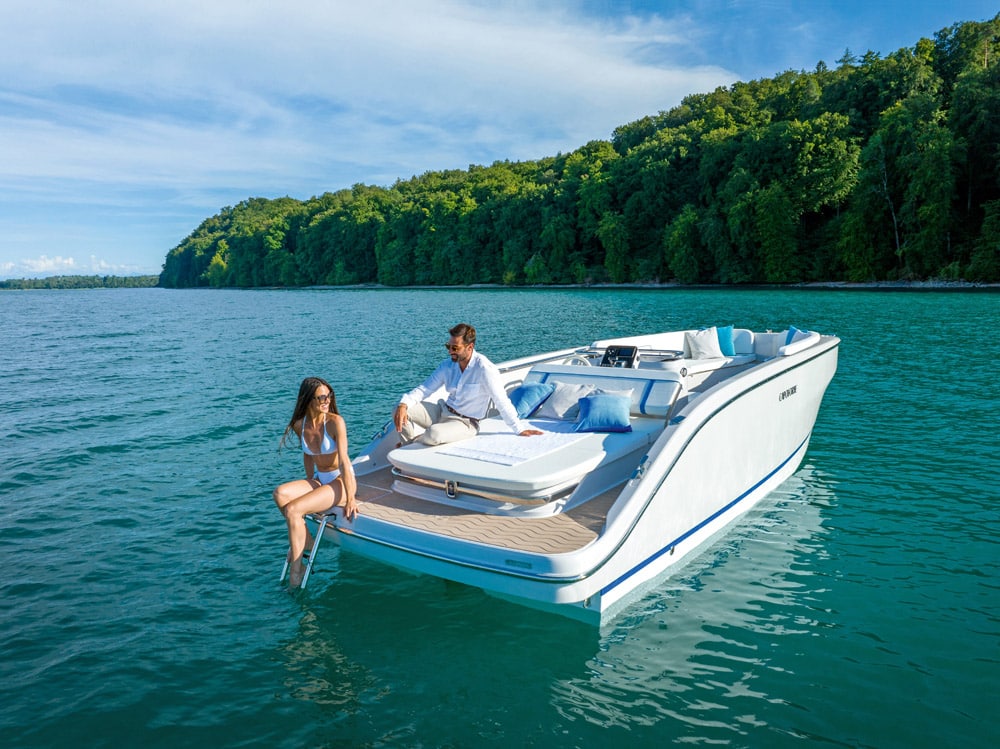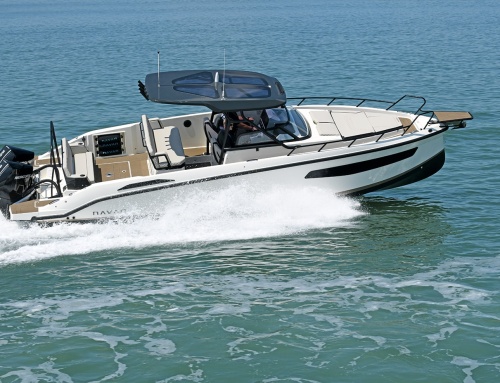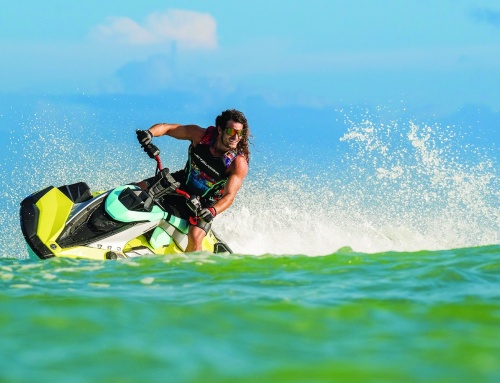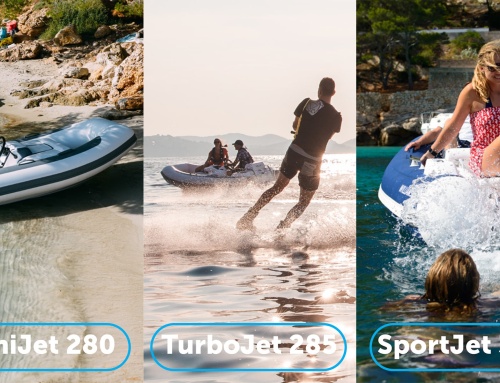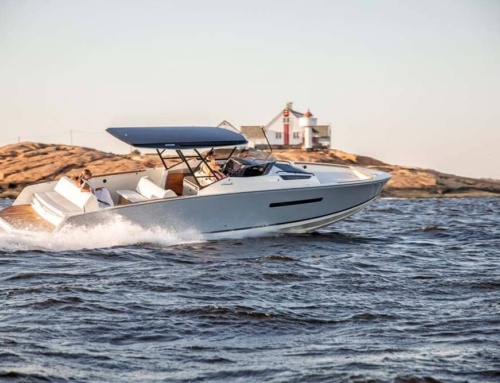HMS flies to Italy’s Ligurian coast on a UK exclusive to test the very first electric offering from luxury leisure brand Capoforte. But just how ‘electric’ did the experience prove to be?
Though its international debut was made at boot Düsseldorf 2023, Capoforte’s first electric-powered craft, the SQ240i, had in fact already received a ‘Design Innovation Award’ at the time of its ‘soft launch’ at the 2022 Genoa Boat Show. Unlike many of its contemporaries, the SQ240i offers potential owners the benefit of two distinctly different power options: either a Yamaha HARMO electric outboard or a 50kW Molabo ISCAD electric inboard motor. The latter was the option offered for trial when PBR were invited to trial the new craft out of Santa Margherita on Italy’s beautiful Ligurian coast.
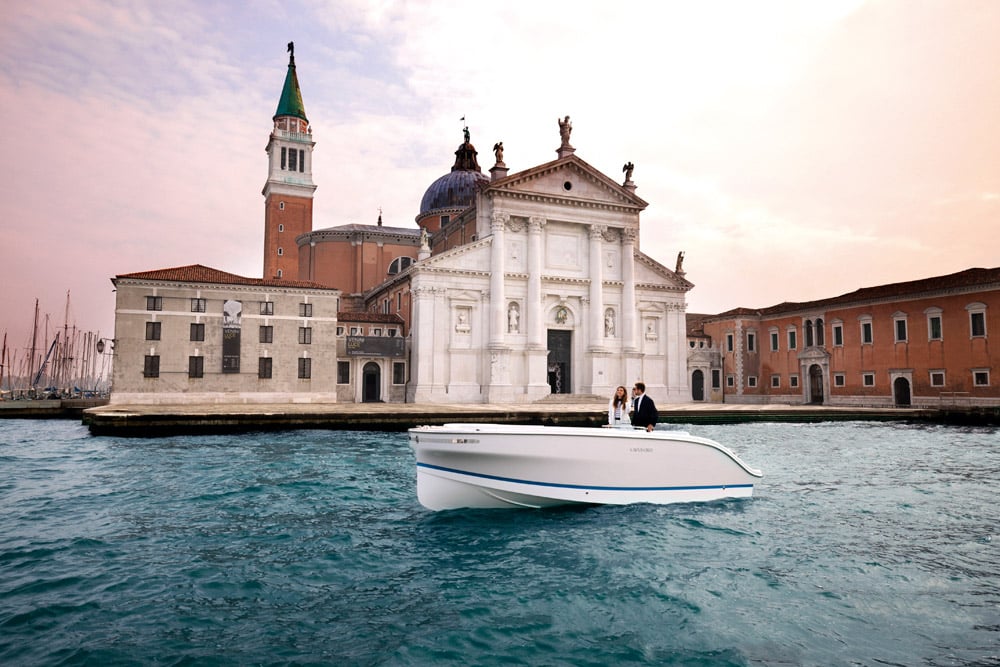
With its high freeboard and ample bench-styled seating plan, at 7.38m in length and with a generous beam of 2.46m, the Capoforte SQ240i is rated for carrying up to 10 people. This type of payload, however, would strictly be limited to ship-to-shore-type use in my view, but nonetheless, it gives you a flavour of the vessel’s ability as a functional people carrier.
The hull of the SQ240i is not of typical, fast-planing design. Rather, its sheer bow and streamlined underbelly are much more intentioned for semi-displacement activities. This makes sense, though, as the vessel’s whole ethos is centred around its electric power and, in turn, gaining the greatest longevity possible from the Molabo ISCAD and its associated power banks. Despite its looks and shapely lines, the SQ240i, therefore, is not really a sports boat in the typical sense as, realistically, battery life dictates that slow speeds are generally the order of the day.
Stepping aboard
In terms of the boat’s internal layout, it’s pretty simplistic. There’s little in the way of luxury, and while the foredeck with its central, detachable table adds to its propensity for socialising, the detachable cushions to the surrounding seating units are neither deep nor generous in thickness. Plus, upon becoming wet, their stitching allows water ingress into the foam within. This means wet bums, as I was to discover within a few minutes of being seated up in the bow after a night of rain. The backrest cushions too are neither contoured nor moulded, and with the GRP gunwale bulkhead being dead upright, it means your spine digs into its top edge just above the arch of your back. In terms of the foredeck’s adaptability, though, once the central table is removed, the central space can be made into a full sunlounger.
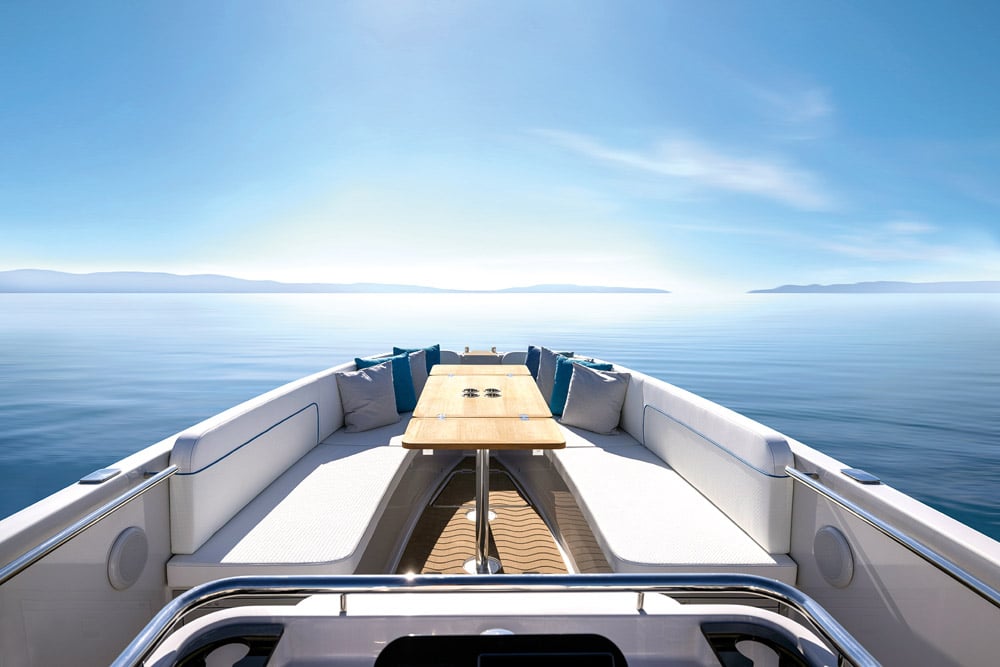
The interior of all the lockers appeared dry and each storage compartment was lined, with the exception of the anchor locker up in the forepeak, the interior of which was of simple flow-coat finish. As for the helm console, it’s primarily functional and possesses no notable design features to really speak of beyond the forward-facing double bench seat with its internal fridge compartment. From the helm, the electric motor’s display, though, is intuitive, informative, easy to read and, of course, critical to the operation of the craft. But in terms of the console’s ergonomics, I did discover an annoying finger trap between the wheel and the dash that caught me out more than once during the course of the trial.
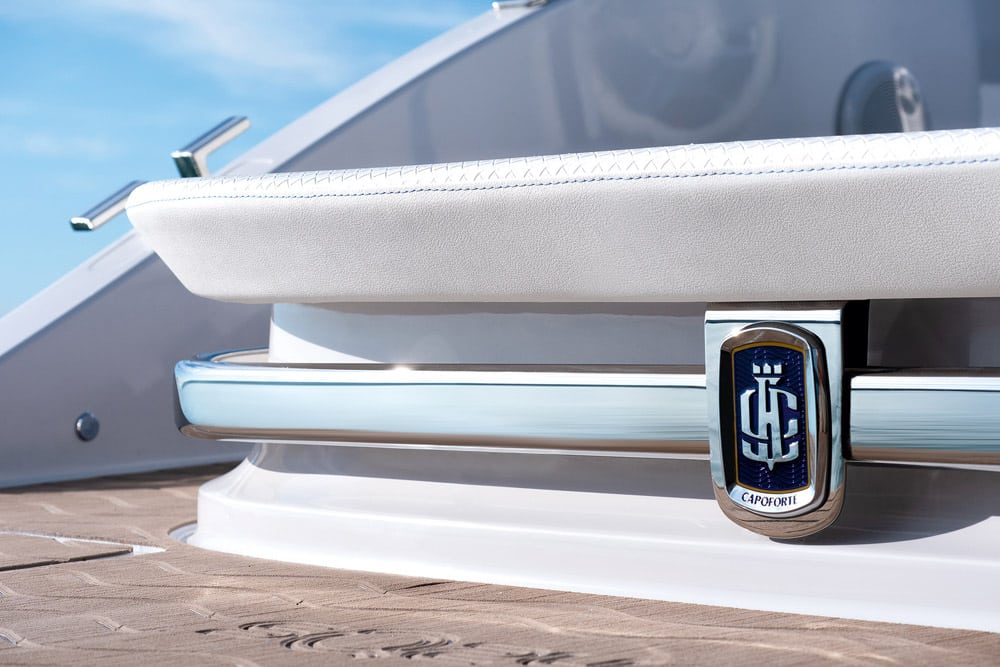
Detailing and internal fit-out of the Capoforte SQ24oi
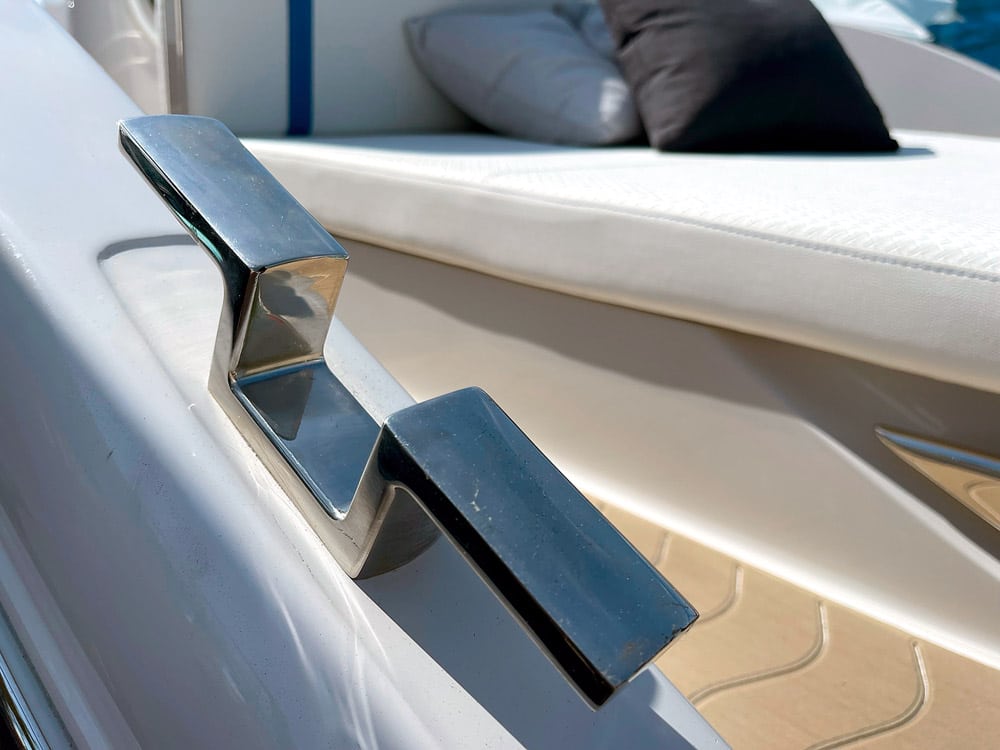
Profile showing thin cushioning.
Backed by a double-width bench seat, which works adequately as a basic helm seat, the helm console’s design lends itself in particular to being stood behind. This affords the driver/helmsman the ability to keep a watchful eye over the welfare of their passengers. While the boat’s high gunwales provide a good degree of security, especially with children on board, it has to be remembered that there are no transom gates, and the self-draining deck leads straight out onto the swim platform unhindered.

A pop-up bimini provided welcome shade from the Italian sun and no doubt would be considered a must-have ‘extra’ when using the boat in hot climes. At low speeds and in the light breeze on the day of the test, it worked perfectly well, and was easy to deploy too.
At the business end
I mentioned the engine bay earlier, but bearing in mind the size of the Molabo ISCAD V50 electric motor (a low-voltage 50kW straight-shaft inboard weighing just 45kg), the engine bay is truly vast! Even with the Molabo’s batteries strapped to the compartment’s outer bulkheads, there’s still room to throw a party down there! While extra space seems sensible for those who may wish to add extra batteries, its proportions do take up about a third of the vessel’s entire interior. Of course, its top can be utilised as a sunbed, and commendably there exists good access on either side of the housing to the super-sized swim deck, but the engine compartment appears more suited to taking a Volvo D3 diesel engine than an electric motor the size of a large hair dryer!

The spartan modern e-helm.
Moving on to the matter of performance, based upon the information I was able to garner, motoring all-out at the hull’s present maximum 28-knot design speed, this rate of energy burn would give you 45 minutes’ worth of boating. If you dropped down to 6 knots, it would be more like five hours. In fact, I found there was little point in pushing it beyond 6.5 knots anyway, as the hull’s resistance was such that the rate of energy drain beyond this speed was massive and gained one little in terms of real performance. Applying more power tended to simply give the boat a bow-up attitude from which the hull appeared unable to break free. At 2.5 tonnes, the SQ240i is quite a heavy boat. Each battery weighs 55kg, with our test boat being installed with four of these. The batteries have a full-charge capacity of 36kW (maximum charge held = about 85%), with a recharging time of 12 hours at 3kW. By my assessment, if you were to gently potter about at 6 knots, half a day’s boating would be likely to set you back about £25.
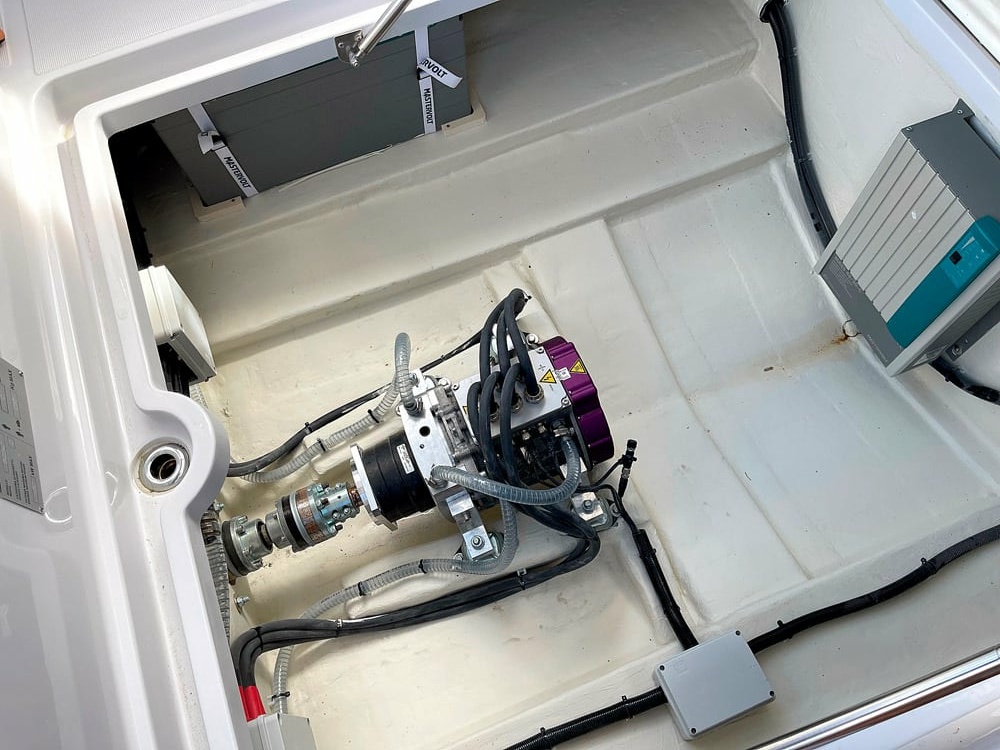
Molabo V50 e-motor.
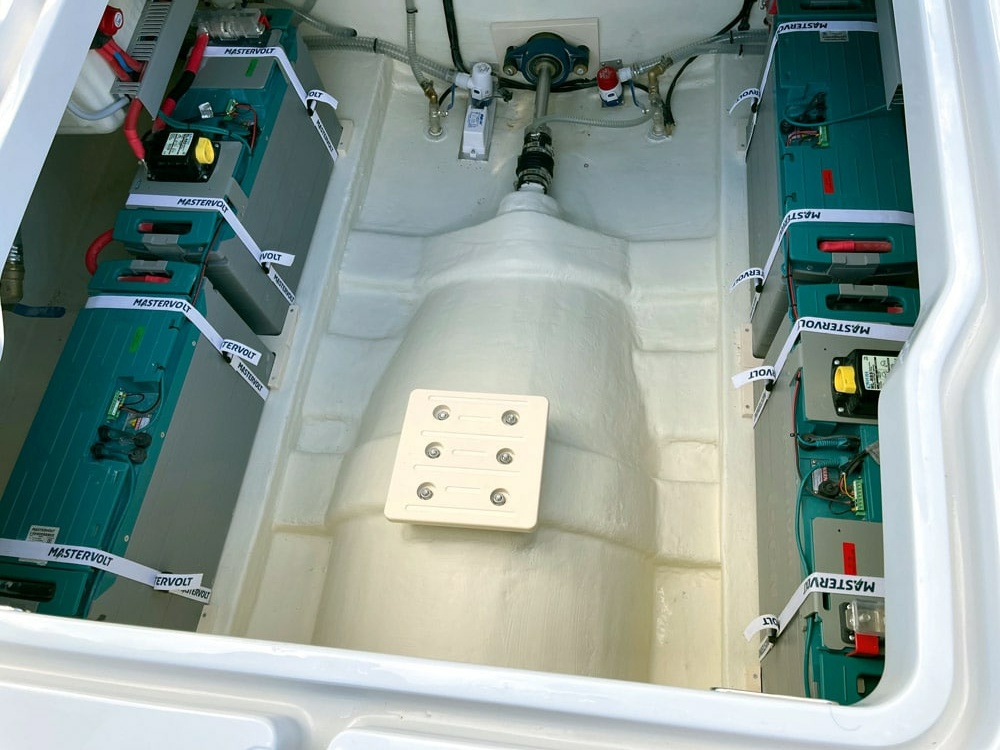
More space again for additional batteries.
The hull & its make-up
Despite its design award, I can’t help feeling that, fundamentally, this hull is not particularly suited to e-power. Predominant sales are to lake users I understand, but experience tells me that a more slender, ‘slipper’-styled hull profile would be preferable in terms of hydrodynamic efficiency – in other words, a hull shape that benefits from offering even less resistance through the water.
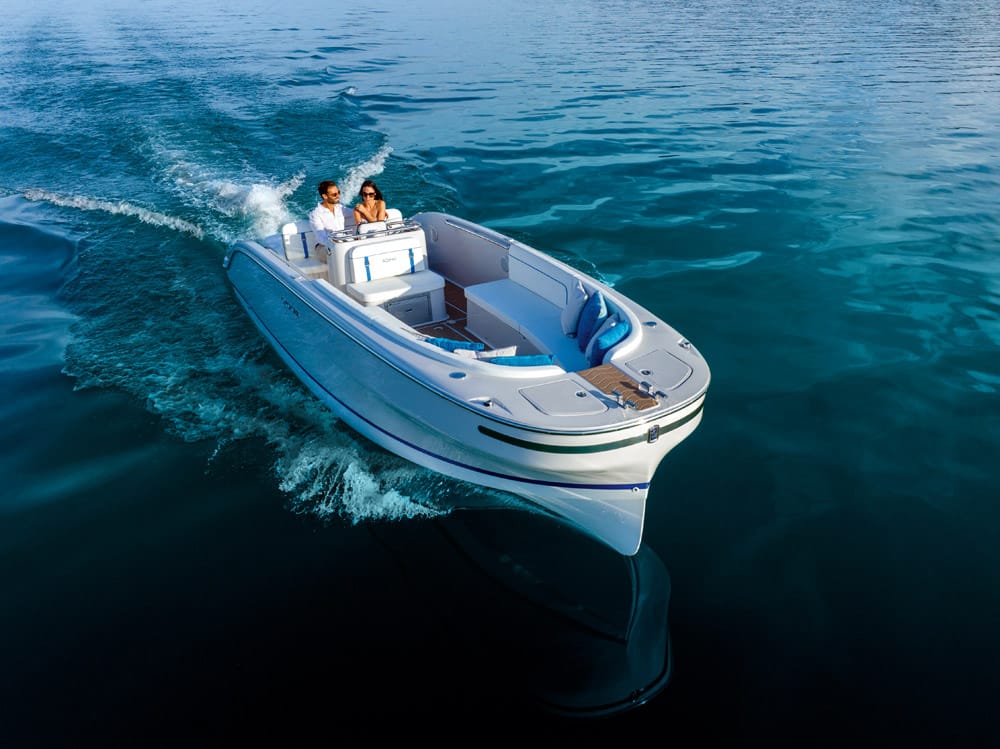
Fine entry of bow flaring to beamy midships.
In addition, I felt that Capoforte, and in particular the vessel’s esteemed designer, Christian Grande, had missed out on the opportunity of making an environmental statement with the launch of the SQ240i. It would have been great to have seen a naturally derived fibre being used rather than non-recyclable GRP. Having made the decision to go ‘green’, a sustainable construction material would have made for a great USP, commercially speaking. When a fully holistic approach to greener manufacturing is taken, the sum total becomes much greater than its individual parts.
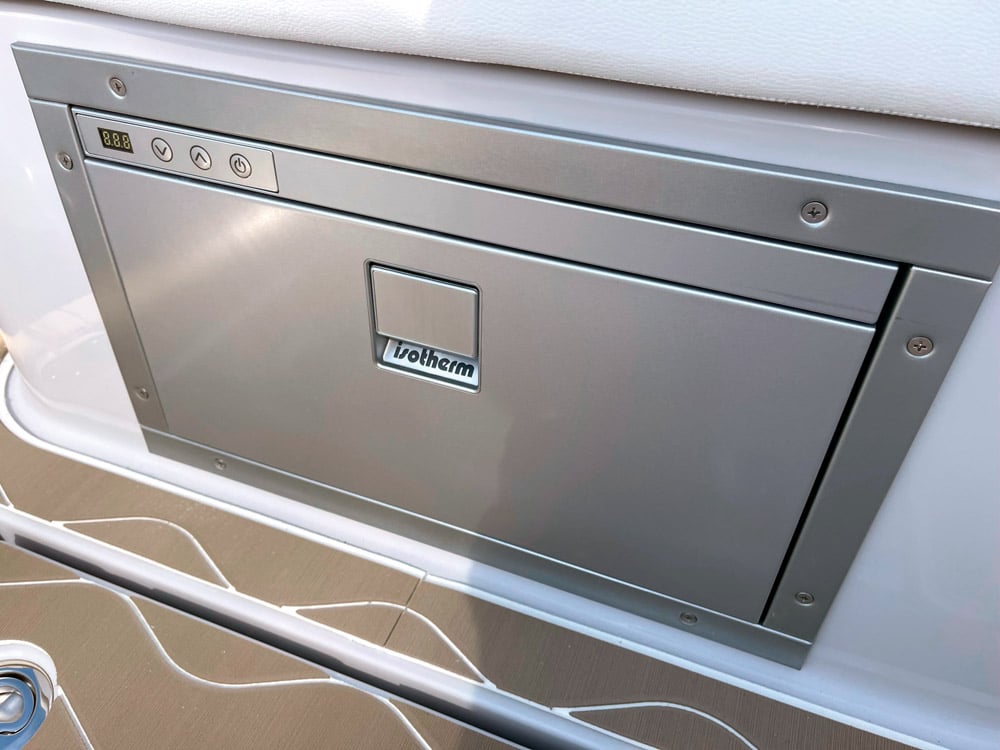
Isotherm fridge unit
In conclusion
The shipyard responsible for the Capoforte and Invictus brands does indeed build some very fine craft, about which PBR have been most complimentary in the past. But despite the Capoforte SQ240i holding the accolade of a design award, in my view, this is the least convincing model we’ve tested thus far from this brand. But then again, on the flip side, this is Capoforte’s first attempt at bringing an electric-powered vessel to market and they should be commended for doing so. Let’s hope they continue on the bold path to more sustainable boating and that the lessons learned with the SQ240i aid them in this endeavour. We at PBR certainly wish them well in this regard.
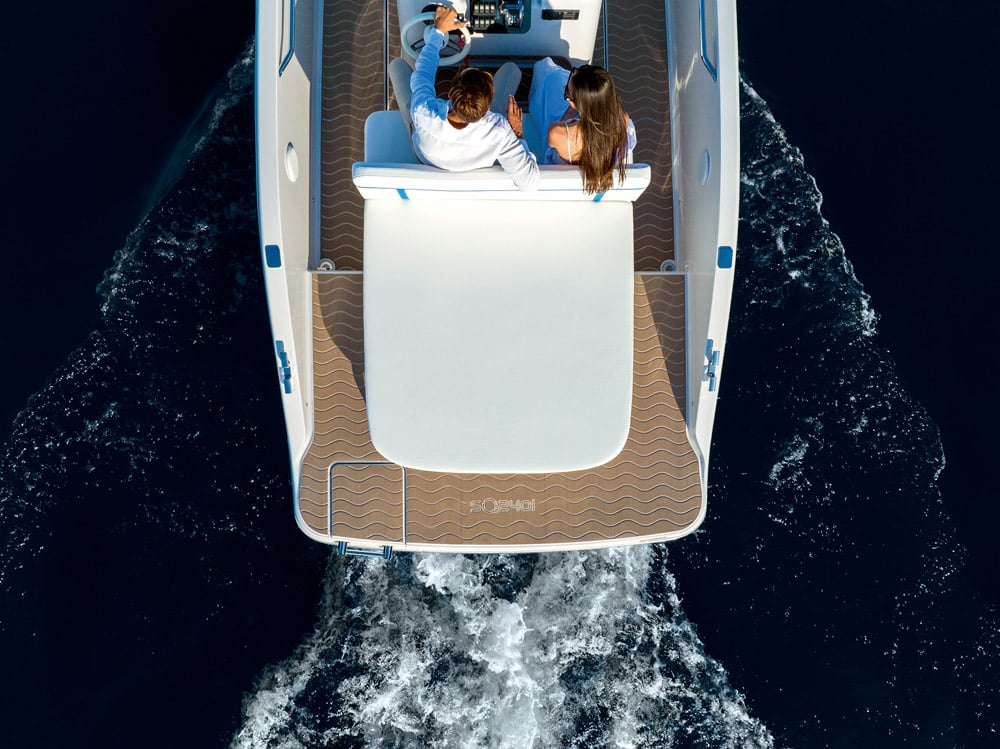
Aft deck with sun lounger and swim ladder.
Specifications
- LOA: 7.38m
- BOA: 2.46m
- Max. payload: 10 people
- Construction: GRP
- Electric motor: Molabo ISCAD V50 / 50kw
- Battery: Max X 200A / 48V / Life P04
- Designer: Christian Grande
Price
- From: 131,000 euros (ex. VAT) with Molabo ISCAD
- 89,000 euros (ex. VAT) with Yamaha Harmo

